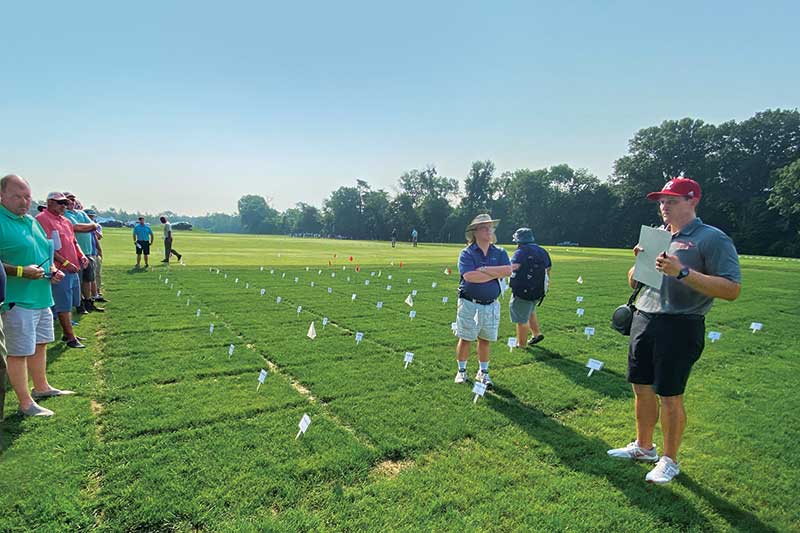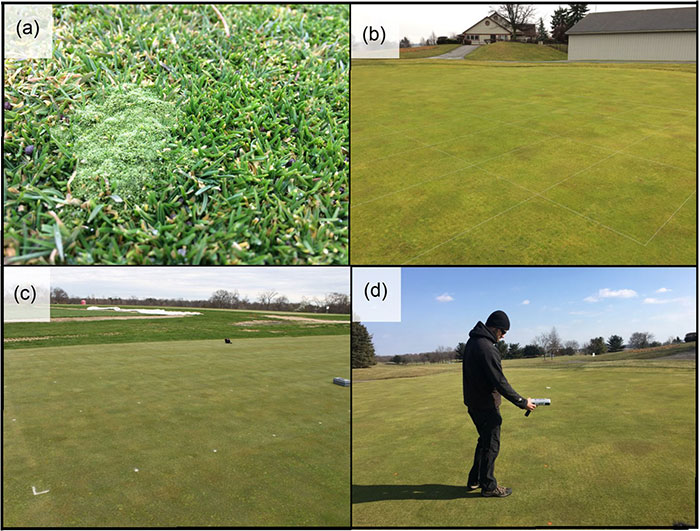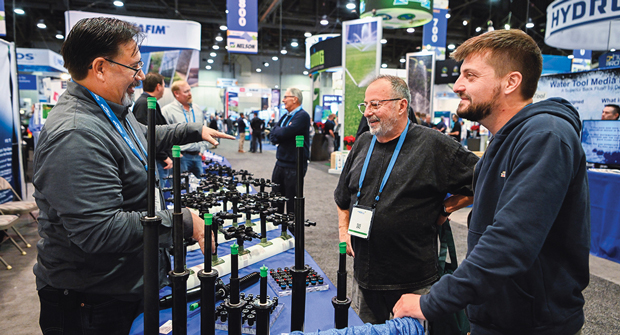Field days return with a bang at Rutgers University’s Turfgrass Field Days
The Rutgers University Turfgrass Field Days, held July 27 and 28, were well attended. More than 360 people were at the first day’s Golf and Fine Turf Event. It was great to be back on research plots after the long break from seeing field research due to COVID-19.
There were 12 stops on topics including cultivar trials, product performance and more.
Bruce Clarke, Ph.D., discussed fungicide performance trials on the control of summer patch on Kentucky bluegrass, dollar spot on creeping bentgrass and anthracnose on annual bluegrass. A general scheme was individual products alone, combination products and a program of different chemistries.

Phillip Vines, Ph.D., discusses developing gray leaf spot resistance in perennial ryegrasses at the 2021 Rutgers Turfgrass Field Day. (Photo: Mike Kenna)
Stacy Bonos, Ph.D., gave an overview of the bentgrass breeding program at Rutgers. Fairway, and putting green bentgrass trials were available for viewing. The National Turfgrass Evaluation Program (NTEP) putting green test had several cultivars with improvements in dollar spot resistance. The NTEP Kentucky bluegrass and tall fescue trials were additional stops. Phillip Vines, Ph.D., reviewed the perennial ryegrass breeding program for gray leaf spot resistant cultivars.
Matt Elmore, Ph.D., discussed the control of deer tongue in fine fescue rough. Elmore and Katy Diehl presented the impact of perennial ryegrass height of cut (HOC) on goosegrass control with preemergent herbicides. There was a great deal more goosegrass infestation in the 0.5-inch HOC plots than the 2-, 3- and 4-inch HOC plots.
Albrecht Koppenhofer, Ph.D., and Ana Luiza Sousa, Ph.D., demonstrated the different sampling methods used for annual bluegrass weevils. They have compared the percentage of adults detected in mower clippings, vacuuming with a leaf blower and by soap flushing. Their results appeared in the October 2020 issue of Golfdom.
Bingru Huang, Ph.D., and William Errickson discussed the field application of plant-growth-promoting rhizobacteria. The research evaluates two interesting strains of bacteria isolated from the Pine Barrens in Southern New Jersey. Under a rainout shelter, the strains appear to help improve the drought resistance of bentgrasses.
Getting out on research plots and being able to visit with turfgrass scientists was great. I hope we can get back to normal and continue seeing our land-grant universities’ exciting research on turfgrass.












